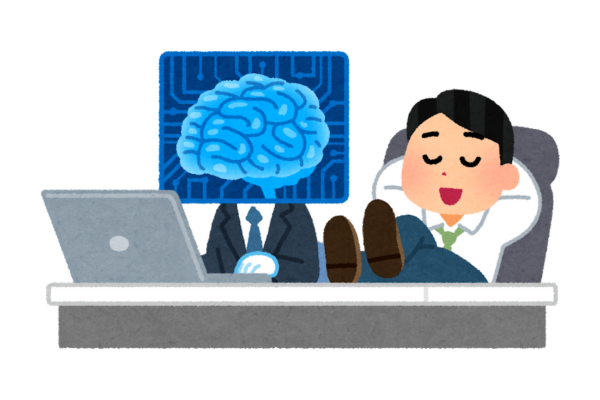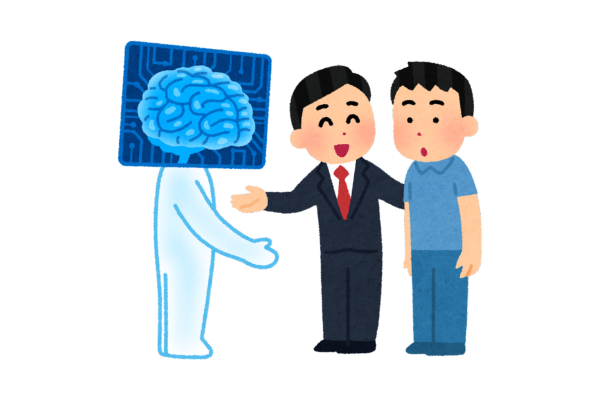Written by Grace McCarthy
Editor's Note: This Q&A session is from our webinar "Using Generative AI (GenAI) for Academic Writing," with questions from participants and answers from expert Grace McCarthy, in-house editor at Scribendi.

Q: You've mentioned plagiarism quite a few times with GenAI. Have anti-plagiarism tools adapted to this environment? For example, could an end user apply a plagiarism tool to clean up a valid use of GenAI? For example, as you mentioned, identifying that a review of a book was plagiarized from a single source?
A: It is possible to input a GenAI output into an anti-plagiarism tool to see whether the output has been plagiarized. However, it's important to know the limitations of plagiarism checker software. Plagiarism checkers identify similarities between the text under investigation and the databases they were trained on, so sometimes things that look like plagiarism (such as commonly used phrases in specific fields) show up in plagiarism checks, even though they aren't plagiarism.
Additionally, while plagiarism checkers can tell you that text is likely plagiarized, they don't tell you the source text that was copied. Were a plagiarism checker to identify an issue with a GenAI output, it would not tell you whether the problem was phrases common to the field in which you are writing or the wholesale theft of someone else's work. It also would not tell you which source was plagiarized, and in something like a literature review, that could be a problem. Anti-plagiarism tools can flag possible problems, but they (a) have limitations users need to be aware of and (b) can't identify specific problems or paths toward resolutions. You could take the text the plagiarism checker identified as problematic and input it into Google to attempt to find and cite the original source, but that requires spending significant amounts of time trying to rule out plagiarism—and you still might commit plagiarism.
Anti-plagiarism tools can be useful, but they also have drawbacks that should be considered before they are used in conjunction with GenAI outputs.
Q: Can AI help identify plagiarism?
A: GenAI tools are not currently trying to take over the market from other types of plagiarism detection software—that's not their niche. However, a valid use of both GenAI and Google is to take a GenAI text output and input it back into Google (or a plagiarism detection tool) to see if the text was plagiarized. However, this process is inefficient. For example, if you are grading 50 essays in one sitting, inputting problematic text into a GenAI tool and then asking if it is plagiarized would be unnecessarily time consuming and inaccurate. Extant plagiarism detection software is better suited to this task.
Q: Is AI as efficient in English as it is in, for instance, Spanish?
A: GenAI is constantly evolving and learning to function in multiple languages. However, most large language models (LLMs) currently perform best in English. Some of them function well in some other major languages (such as Mandarin and Spanish), but in less common languages, GenAI performs poorly.

Q: Can you say something about doing a literature review using AI? Which tool do you recommend?
A: If you're in the research process and you're trying to find articles, you will be best served by sticking with your library search engine functions, Google Scholar, and databases, such as PubMed, rather than asking GenAI to find articles for you.
If you already have 150 articles from a keyword search and you need to identify useful ones, you could input the text of an article into any GenAI and ask for a list or summary of its key points. This is a useful way to winnow out articles that are not relevant to your research topic.
Be careful if you use this technique, because GenAI summaries of key points can miss things. If an article summary looks borderline useful, double-checking it manually is always a good idea. However, in general, asking GenAI to give you summaries of the key points of articles would be faster than manually assessing them.
Q: Is pasting my own paragraph into AI and asking it to improve my writing a useful method?
A: Some people like to use GenAI for editing, but others do not. If you face flow, cohesion, and grammar error challenges in your writing, then GenAI can be useful in identifying errors and improving your writing. However, you must still review and further revise any text that a GenAI tool has edited to ensure that it still says what you want it to say and that it still sounds like you. One of the pitfalls of using GenAI in an editorial capacity is that it can remove your authorial voice.
Whether this method is effective for you depends on how much time you're willing to dedicate to reintegrating your authorial voice into a GenAI tool's changes. Asking a GenAI tool to improve a paragraph can be helpful, but do not automatically assume that the text it outputs is publication ready. This technology can help, but there will still be editing to do after the GenAI has output revised text.
Q: Do you have any journal articles that describe the use of GenAI well in their writing process? I seldom read the authors' disclosure about the use of AI in their manuscripts.
A: Libraries and publishers have some wonderful examples of disclosure statements that authors can use as templates to craft appropriate statements for their papers. Examples in published papers are still relatively rare, but expect to see more of them as GenAI becomes a normalized part of the researching and writing processes. Below are a few examples.
Sage offers the following recommendations for elements to include in your GenAI disclosures:
To uphold ethical norms of transparency, openness, honesty, and fair attribution of credit, in cases where LLMs are used, disclosure should happen:
(1) As free text in the introduction or methods section (to honestly and transparently describe details about who used LLMs, when, how, using what prompts and disclose what sections of the text are affected; to prevent giving undue credit to human contributors for work they did not do)
(2) Through in-text citations and among references (to improve findability and indexing) using the following format:
OpenAI (2023). ChatGPT (GPT-4, May 12 Version) [Large language model]. Response to query made by X.Y. Month/Day/Year. https://chat.openai.com/chat
To enable verification, interactions with LLMs (including specific prompts, and dates of query) should be recorded and disclosed:
(3) As supplementary material or in appendices.
Monash University recommends the following formats for GenAI disclosure statements:
I acknowledge the use of [insert AI system(s) and link] to [specific use of generative artificial intelligence]. The prompts used include [list of prompts]. The output from these prompts was used to [explain use].
I acknowledge the use of ChatGPT (https://chat.openai.com/) to generate materials for background research and self-study in the drafting of this assessment. I entered the following prompts on 4 January 2023:
Write a 50 word summary about the formation of Monash University. Write it in an academic style. Add references and quotations from Sir John Monash.
The output from the generative artificial intelligence was adapted and modified for the final response.
Deakin University offers these examples:
I acknowledge the use of Name of generative AI tool (accessed Month Year) and Name of generative AI tool (accessed Month Year) in developing some of my ideas and writing for this assessment. All AI-generated output was critically reviewed. Examples of prompts, outputs and my responses are provided in Appendix 2. The final content, conclusions and assertions in this paper are my own.
This paper was edited with the assistance of Name of generative AI tool (accessed Month Year). I have critically assessed and validated any generated feedback. The final version of the paper is my own creation.
The University of Melbourne offers this example template:
Declaration
I acknowledge the use of [AI tool or technology name] and [link] to generate.../ I have not used any AI tools or technologies to prepare this assessment.
Prompt: I entered the following prompt/s...
Use: I used the output to.../I modified the output to...
I acknowledge the use of Bing [Bing.com] to generate an outline for an essay.
I entered the following prompt: 'Provide an outline for a 1000 word essay on the effects of technological development on income inequality in Australia.'
I used the output at the initial stage of the assessment task to help plan my essay. I modified the outline generated, discarding several suggested body paragraphs and replacing them with my own ideas based on the research and reading I completed.
The University of Leeds offers the following example acknowledgement: "I acknowledge the use of ChatGPT-3.5 (Open AI, https://chat.openai.com/) to summarise my initial notes and to proofread my final draft."

Q: As a nonnative English writer, I find it really difficult to notice the errors that AI makes regarding tone.
A: We completely agree! If you are writing a paper in a second language, a human editor will always be the best option to check your writing for correctness. Human editors surpass GenAI in terms of ensuring that your writing's tone, idiom use, and word choice are correct and sound like they were crafted by a native speaker.
Q: As an academic peer reviewer, I've noticed some reviewers are using ChatGPT to draft peer review reports. I am struggling to accept that my unpublished manuscript may be submitted to a GenAI tool without me knowing it. Any thoughts on this?
A: Unfortunately, this is not something that Scribendi editors or copy editors in general can remedy. Scribendi never inputs client documents into GenAI software and is committed to never doing so.
However, journals are increasingly addressing this issue! For example, Elsevier has a section on AI use by peer reviewers in its policies. Elsevier explicitly asks peer reviewers NOT to input manuscripts into GenAI tools. If your peer reviewers have input your paper into GenAI tools, you could report this policy breach to your editor.
If your target journal lacks such explicit policies, consider asking the editor of that journal if this practice is acceptable for peer reviewers before submitting your manuscript. Alternatively, consider including a section in your cover letter that explicitly states that you do not give permission for your peer reviewers to input your manuscript into GenAI software. You could even cite Elsevier's policy and rationale as part of your reasoning. Journal editors should be responsible for making clear what tools are and are not acceptable for reviewers to use in their role.
Make Every Word Count. Hire a Professional Editor.
Try Our Academic Editing Service, or Get a Free Sample
About the Author
Dr. Grace McCarthy earned her PhD in English and Film Studies from Wilfrid Laurier University and her MA in English from the University of Alaska Fairbanks. Her research specializes in early modern drama and disability studies, and she has published with Routledge, McFarland & Company Inc., and English Literary Renaissance on topics from the Patient Griselda folklore to disability in Shakespearean drama to ableism in the Marvel Cinematic Universe. In her free time, she edits the Supplemental Case Files for The Redacted Reports: A Delta Green Podcast. She is currently an in-house editor at Scribendi Inc., where she uses her expertise to help clients use the written word to meet their goals and achieve their dreams.

